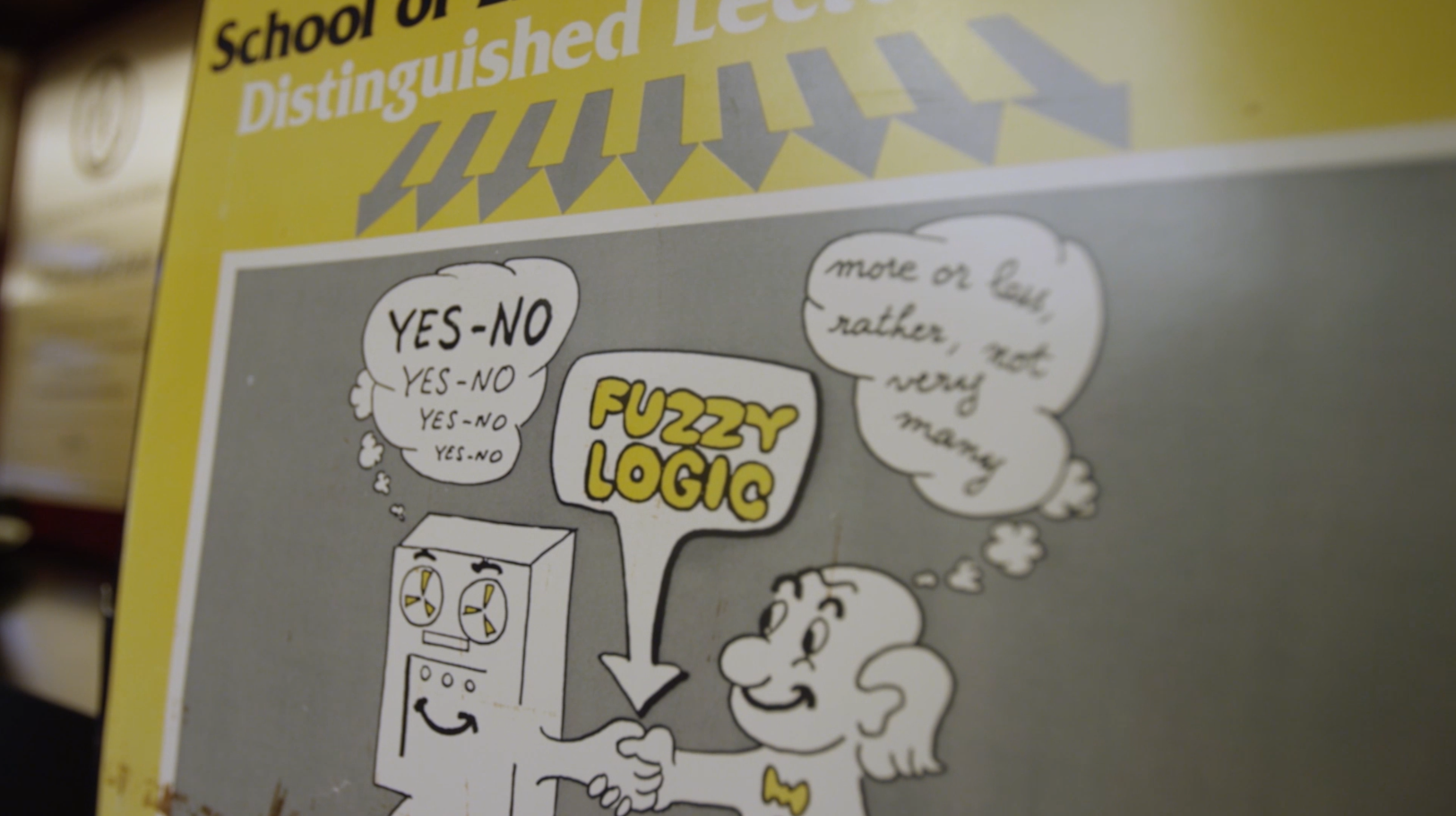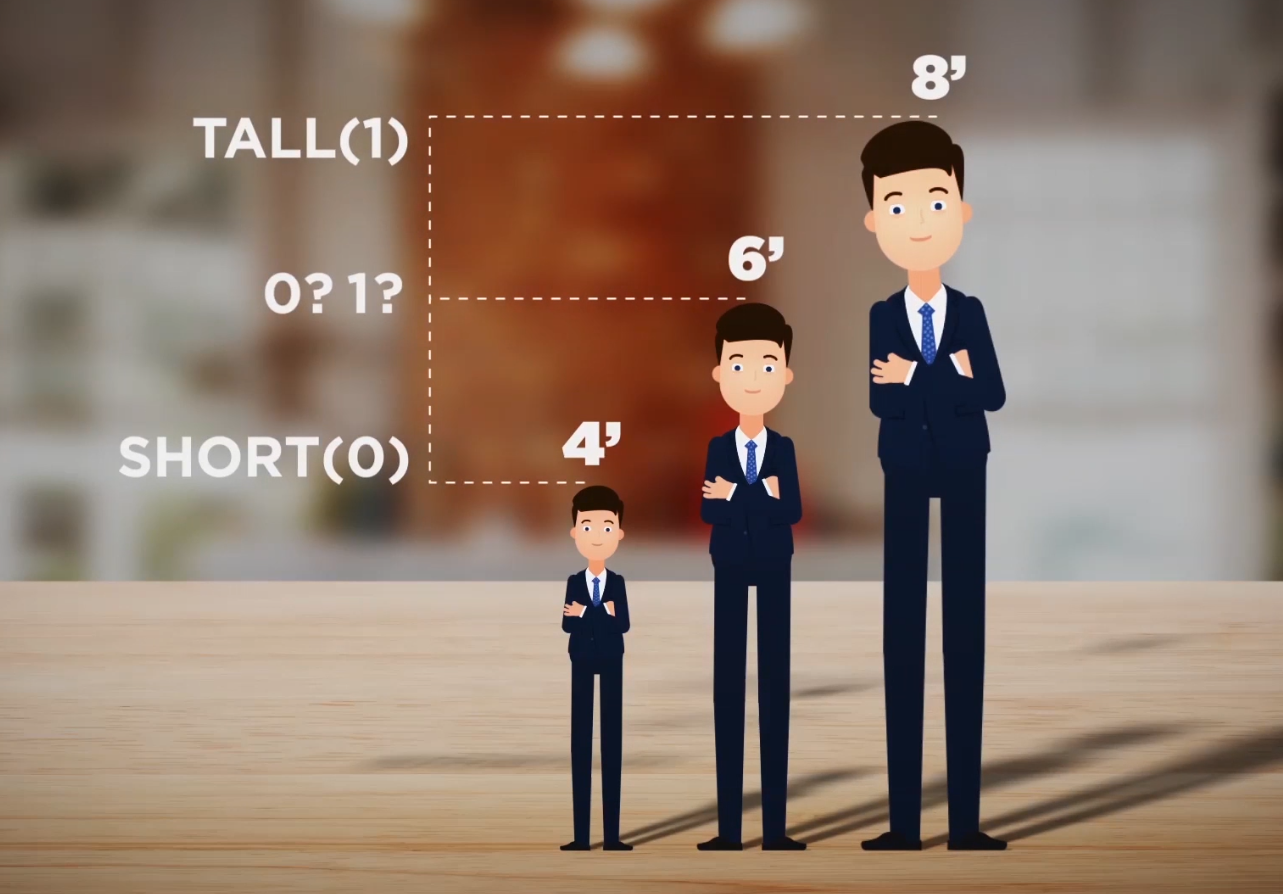AWARDEES: Lotfi A. Zadeh
SCIENCE: Fuzzy Logic, Clear Impact
FEDERAL FUNDING AGENCIES: National Science Foundation, Air Force Office of Scientific Research
Lotfi A. Zadeh
Lotfi Zadeh took more than his fair share of criticism for his outside-the-box idea. Well, actually it was more of a do-away-with-the-box-entirely idea. The name he gave his original concept in 1965, “fuzzy sets” – a critical part of fuzzy math or fuzzy logic – was almost designed to invite criticism. From the halls of the academy to the halls of Congress, ridicule for Lotfi’s work was not hard to find. But peer inside the logic systems that control everything from vacuum cleaners to auto-focus cameras, air conditioning to anti-lock brakes, and what you find is fuzzy.
Lotfi Zadeh was born in the former U.S.S.R. in Baku, Azerbaijan, before he and his family migrated to Tehran, Iran, when he was a child. After finishing his undergraduate degree in Tehran, he came to the United States to study electrical engineering at MIT before completing a Ph.D. in the same field at Columbia University and going on to become a full professor there in the 1950s.
Before he ever envisioned fuzzy logic, Lotfi and fellow Columbia Professor John Ragazzini came up with an idea known as the “z-transform” in 1952. Their concept was a method for processing and analyzing data that comes in discrete time intervals—for instance, audio or video signals that come at a certain frame rate. The method they developed continues to find wide use in digital signal processing and other applications. This would be just the first of two of Lotfi’s major contributions to science and engineering that made an impact on all our lives, whether we realize it or not.
As early as 1961, Lotfi and his colleague began writing about the need for some sort of “fuzzy” mathematics to help translate fuzzy human concepts into the concrete instructions computers need. One fateful night in 1964, those fuzzy notions crystalized.
Lotfi had plans with friends for dinner that night, but at the last minute, those plans fell through. As he made his way home, he figured out the critical missing piece for fuzzy math: the idea that things can have a grade of membership to some concept. Say, for instance, whether one is included in a dinner plan, or not.
It must be fuzzy
To understand fuzzy logic, it’s easiest to think through examples. Consider the “fuzzy” concept of “tall.” A person who is 8 feet tall is clearly “tall.” Similarly, someone who is 4 feet tall is considered “not tall” or “short.” But what about someone who is 6”? That person is somewhat “tall,” but also perhaps in the category “average height” or even “short” to some.
Lotfi’s insight was to introduce the concept of membership functions, which help to assign concrete ideas like 5’9” to various fuzzy categories based on a formula. In this example, a 7 foot tall person has full membership in the category of “tall,” while someone 5’9” is perhaps 60 percent part of “tall,” 30 percent part of “average height,” and 10 percent part of “short.” Putting mathematics behind how human “fuzzy” concepts map to concrete variables makes computations with these fuzzy variables possible. With his ideas, a computer can decide whether a logical statement like “most Swedish people are tall” is true, false, or somewhere in between, and thus make decisions based on fuzzy logical statements.
As he put pen to paper, Lotfi was confronted with the next problem: what to name this new math he was conceptualizing. In interviews, he says he struggled over what to call it, but kept coming back to one word: “fuzzy.” He knew it had negative connotations in the English language (though interestingly it does not in many others). Nonetheless it accurately described the idea. With that, he named his seminal 1965 paper “Fuzzy Sets,” and today his concepts go by the more general name fuzzy math, or fuzzy logic.
A mixed response
“Fuzzy Sets” is one of the most cited scientific works of all time and has impact far beyond the scientific literature. The work is referenced in tens of thousands of patents in the United States and around the world.
At the same time, many of Lotfi’s colleagues in the academy, even ones he knew personally, offered blistering criticism, calling it “wrong and pernicious,” and even saying that Lotfi must have been influenced by the political climate often accused of fuzzy math of its own.
There is a connection between fuzzy logic and politics, but not the one his colleagues envisioned.
In the 1970s, far beyond the halls of Berkeley, where Lotfi then served as a professor, fuzzy logic grabbed the attention of Sen. Bill Proxmire and his infamous Golden Fleece Award. Proxmire, in reviewing the NSF budget, came across the funding for research on fuzzy logic and sent a missive to the Foundation. He demanded to know why they would fund such nonsense and threatened to single out the work for his mocking Award.
In correspondence, Lotfi and the NSF managed to smooth out the Senator’s concerns, convincing him this was far from nonsensical. For Lotfi, it was just another example of what he had run into throughout his career – those who don’t know what fuzzy logic is are the most critical.
Lotfi A. Zadeh
Undeniable impact
The true impact of what Lotfi developed in fuzzy logic wouldn’t become clear for over a decade. The field progressed and others took up his idea in the academy. But you would be forgiven for not having heard of it outside the walls of engineering and computer science departments like Lotfi’s. At least until 1986.
Within a year of publishing his seminal work, Lotfi had received a letter from researchers in Japan and elsewhere expressing their appreciation and interest in his work. Part of this interest came from the fact that fuzzy was not a pejorative term in Japanese, but instead a neutral or even positive one. Researchers there took his idea and ran, creating conferences and journals focused on making advances in fuzzy logic. To this day, the only country with more patents on fuzzy ideas and concepts than the United States is Japan.
In 1986, the first commercial application of fuzzy logic hit the shelves in Japan: a fuzzy shower head. Using fuzzy concepts of hot, cold, high pressure, low pressure, and others, the shower head could use fuzzy logic to control showers across the country. Within a few years, the market was overflowing with fuzzy consumer products. Vacuum cleaners, rice cookers, air conditioning systems, microwaves, everything was moving to fuzzy control. Even the entire subway system of Sendai in Japan was built with fuzzy logic controlling the motion of the trains. But this was more than a marketing gimmick. Fuzzy control systems helped the companies behind these products improve efficiency and of course, ease of use for the fuzzy human mind.
As our lives are ever more consumed with interactions with electronic machines, being able to communicate is becoming all the more important. Devices that understand human speech hold tremendous potential. Amazon’s Alexa and Apple’s Siri are already becoming ubiquitous among the developed world, but researchers and technologists are hard at work on better assistive devices for handicapped individuals and myriad other medical applications. Estimates of the global market for voice recognition devices expect that it will exceed $100 billion by the 2020s, while continuing to grow rapidly.
Beyond just voice recognition technology, there are dozens of journals and conferences where researchers are continuing to develop the concept of fuzzy logic and explore applications, especially in the development of artificial intelligence. All of this was set in motion by Lotfi’s fuzzy insights more than 50 years ago. While the logic may be fuzzy, the impact surely isn’t.
Lotfi A. Zadeh
1921 - 2017





